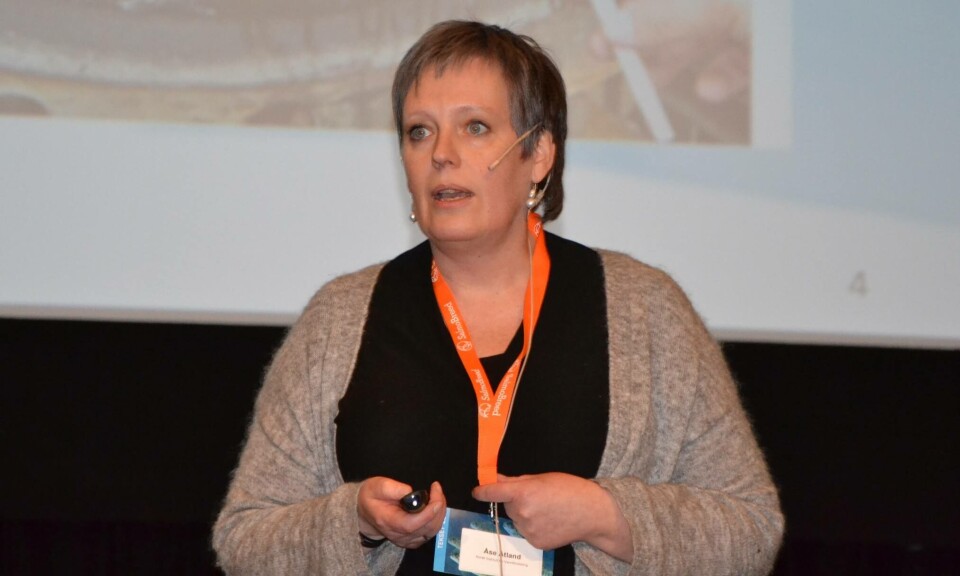
Scientists seek to get measure of RAS gas problem
New measurement methods will make it easier to measure and monitor levels of hydrogen sulphide in recirculating aquaculture systems (RAS).
An increasing preference for growing salmon to a larger size before setting them out in sea cages means more RAS plants are being built, but it appears that the introduction of saline in connection with smoltification in these plants has been challenging for many farmers. The formation of hydrogen sulphide is an increasing problem and has resulted in acute fish deaths.
Brackish water can cause problems
Åse Åtland, research director at the aquaculture branch of the Norwegian Institute for Water Research, NIVA, told Fish Farming Expert’s sister site, Kyst.no, that several factors must be present for hydrogen sulphide to be formed in RAS plants. When sludge is formed in the plants, and there is a certain thickness of this sludge, oxygen-poor conditions will occur.
“This leads to a denitrification where nitrate is released as nitrogen gas and sulphate-reducing bacteria convert sulphate into hydrogen sulphide. Therefore, there is very much focus on sludge,” she says.
The big difference between seawater and freshwater is that sea water contains significantly more sulphate than freshwater.
“In freshwater, the sulphate concentration is on average 2 mg / L, and for sea water it is approximately 2700 mg / L average. There is much more sulphate in sea water, and this is the reason why more problems are encountered when introducing sea water,” she explains.
Therefore, there will be greater risk of hydrogen sulphide formation when brackish water is present in the plant in connection with smoltification of the fish.
New measurement methods
“One of the major challenges with hydrogen sulphide is that you have not had practical measurement methods previously,” Åtland explains.
“NIVA has been working on developing passive samplers, which is a method adapted to the aquaculture industry. The advantage of these passive samplers is that they are not expensive and can be placed around the plants where it is suspected that hydrogen sulphide may be formed. That way you can measure on several points at the same time.”
She says they have recently tested these samplers on site and have now returned them so that they can be analysed. A number of uncertainties remain to be resolved, including how long these sensors will be in the water, and that is something NIVA is currently working on.
In parallel, Blue Unit in Denmark has made sensors capable of measuring hydrogen sulphide at levels low enough to be relevant to fish health. Åtland states that this is important in order to learn more about hydrogen sulphide and the effect on fish. The goal is to be able to measure the levels in the plants and monitor them.
“These sensors are quite expensive, and therefore the idea is that in the future you can combine the use of sensors and passive samplers so that you get a better understanding of the hydrogen sulphide levels,” she says.
The planning phase is important
Asking about where hydrogen sulphide in the RAS plants is formed, Åtland answers that it varies, but the common feature of the cases they have worked with is that hydrogen sulphide is formed in places where sludge and organic matter are gathered.
“It may be in pipes, bends, under the biofilter or elsewhere where sludge can accumulate. Therefore, design, dynamics and speed of water in RAS plants are very important factors to avoid such types of issues.
“It is important to think that you should be able to clean and inspect all areas of such a facility. This is something that already has to be considered in the planning phase,” she adds.
Lack of knowledge
“There is very much we do not know about salmon and tolerance above hydrogen sulphide as there has not been a lot of work done,” she says, pointing out that while acute events with very dramatic mortality are known about, very little is known about what the fish can withstand and that there may be low levels of hydrogen sulphide in the plants that stress the fish.
“Therefore NIVA, (research institute) Nofima and DTU (Technical University of Denmark) have entered into a collaboration where they will apply to the Research Council for funding to clarify some of the problems surrounding hydrogen sulphide and the chronic effect of it. If they are granted the application, the project will start January 2019,” says Åtland.






















































